Imagine stepping back in time into a Renaissance painter’s workshop and learning their lessons and methods firsthand. When I learned of ‘A Treatise of Painting’ by Leonardo Da Vinci, I realized a glimpse of this was possible! It’s amazing to have access to lessons from Da Vinci and a look into his world and views on painting.
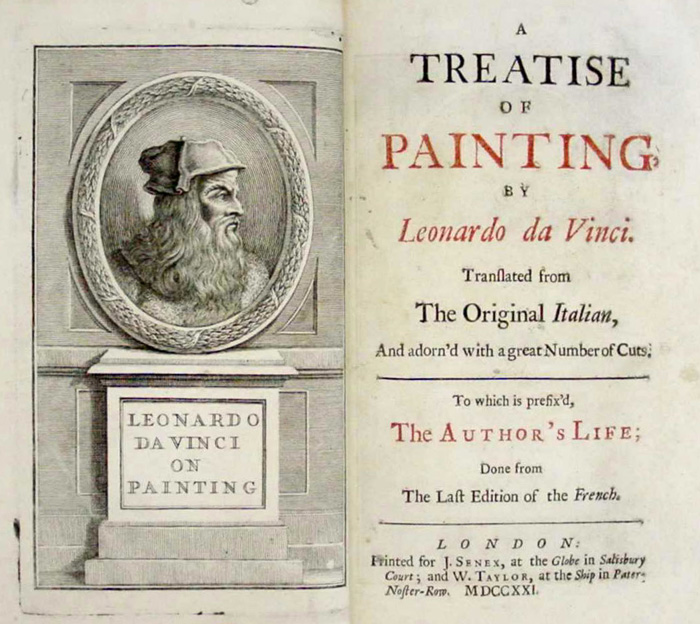
The book gets technical, as he aimed to show that art is a science. So, in this article you’ll find three great painting lessons from the book that you can begin using yourself. Let’s get started with how you can transform the lighting in your studio!
Create a Diffused Light Effect in Your Studio

Da Vinci often recommends creating a diffused light effect as this will help to soften the shadows on your subject. He shares a couple different ways of doing this.
Oiled paper/ parchment paper and blinds over a window
In his “treatise on painting” he suggests to put oiled paper over your studio window to create the desired diffused light effect. I did not feel it was necessary to create oiled paper as we have parchment paper now in this day and age! So, I went about placing white parchment paper over my own studio windows. The light can be strong in my Arizona based studio – so I appreciate the softened light.

Paper blind with artificial light
If you want to paint (or draw) from artificial light (which of course meant candles in da Vinci’s time) also use paper blinds to put in front of the light. You could just use straight paper in this instance as it could use a stronger filter. The blinds will soften the shadows and make them ‘undetermined’. Da Vinci liked soft and hazy shadows in his paintings. In fact, I quote: “as smoke loses itself in the air, so are your lights and shadows to pass from the one to the other, without any apparent separation.”
The Placement and Direction of Light in Your Studio
How you set up your studio may not seem so important at first. However, it has everything to do with the direction of light coming in your studio. Da Vinci was very concerned about light (as all painters need to be).

In the diagram to the right, A B is the window and M is the center of it. C is your model (or still life). The best spot for the painter is in position D where she (or he) will sit slightly sideways between the window and their model. It is the best spot in da Vinci’s opinion because the artist will see his model partly in the light and partly in shadow.
The direction of the light in your studio
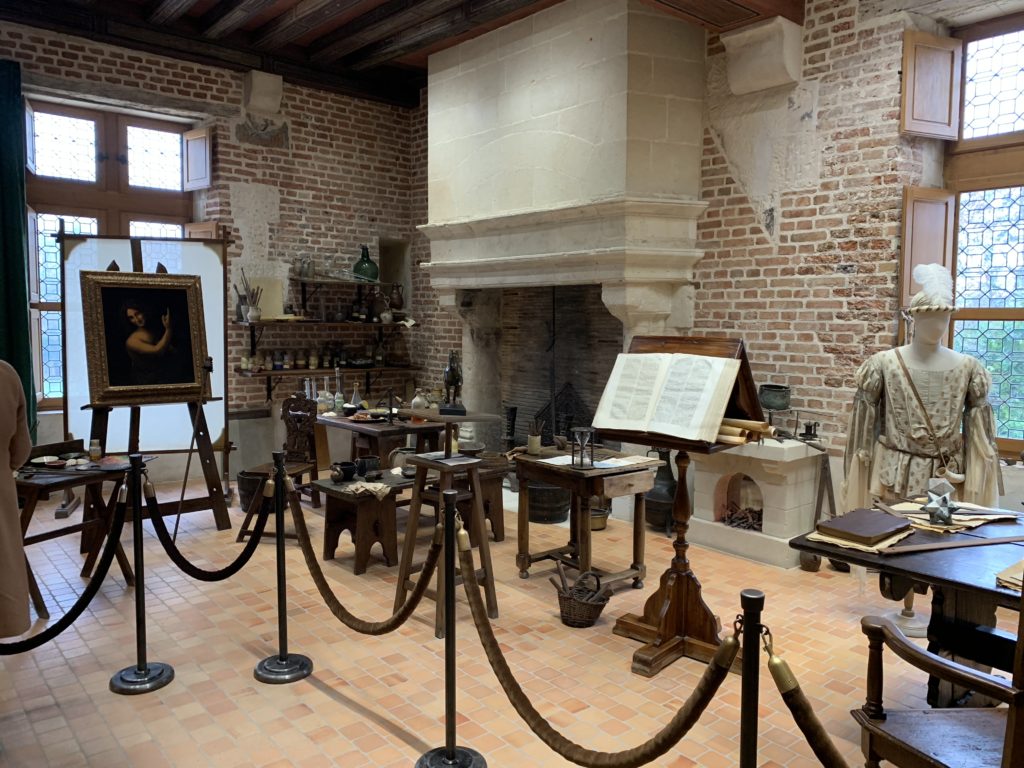
It best if your studio window faces north. North facing light is the best light to paint in – according to da Vinci and pretty much all painters alive today would agree. The reason being that north light changes the least.
If studio faces south, put paper blinds on your windows. This helps your shadows to not be altered as the sun goes around.You could try parchment paper as described in the above section. However, sometimes a south facing window might need a stronger filter that regular paper provides. You can experiment though with what works best.
Aspire to “Linelessness” in Painting

Da Vinci makes an important note when saying to “take care that the shadows and lights be united, or lost in each other; without any hard strokes or lines’ as smoke loses itself in the air, so are your lights and shadows to pass from one to the other, without any apparent separation”.
He encourages the artist to focus more on the values over creating outlines of the subject. It is because this creates the strongest sense of light and volume in a painting. If we look at his paintings we can see him putting this into practice. We can also see great examples of this in many other old masters’ work.

In Da Vinci’s statement he also encourages the painter to group and simplify values together. Which is what he communicates when he says to “take care that the shadows and lights be united”. This is one of the absolute most important things you need to do when working with value.
Apply Da Vinci’s Lessons to your own work
It’s absolutely fascinating to read Da Vinci’s lessons and thoughts on painting. Especially when they are age old lessons that are just as relevant today as they were 500 years ago. This is the beauty of painting, as many of the lessons taught today are the same as the old Masters used. It connects us to the past while helping us forge new paths into the future with timeless knowledge of painting.
If you would like to take a look at Leonardo’s ‘A Treatise of Painting’ for yourself, you can get for yourself a hardcopy version here. I hope these lessons from Da Vinci inspired you—love to hear your thoughts in the comments below.
Want to remember this? Save Art Lessons from Da Vinci to your favorite Pinterest board!

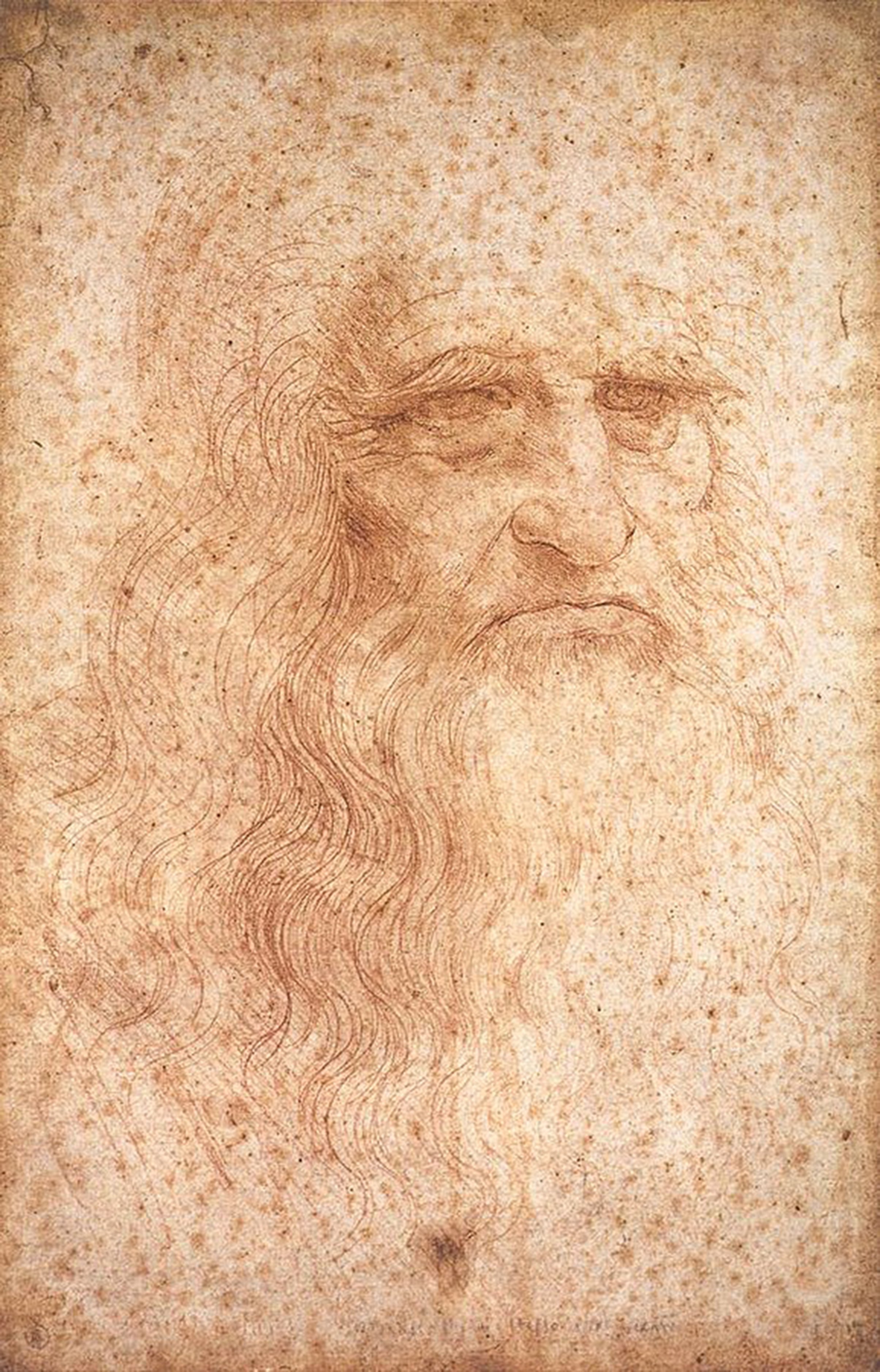

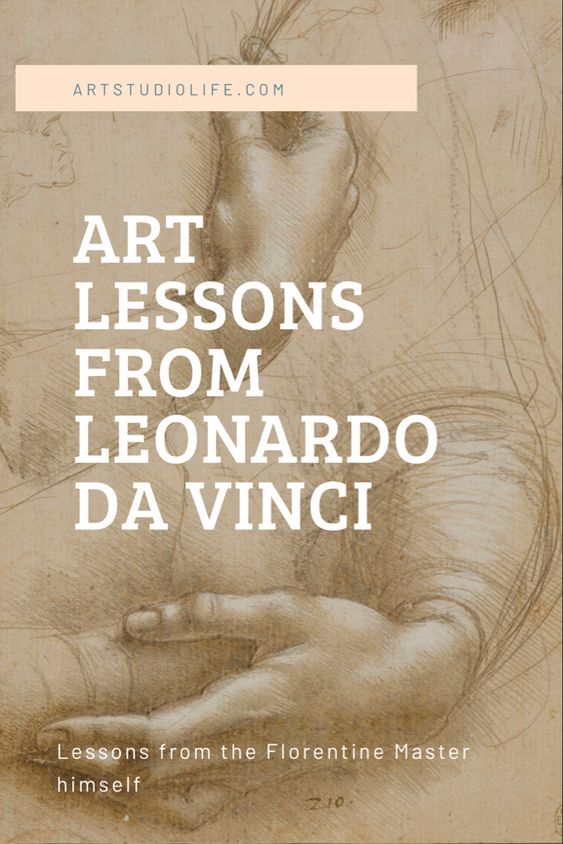

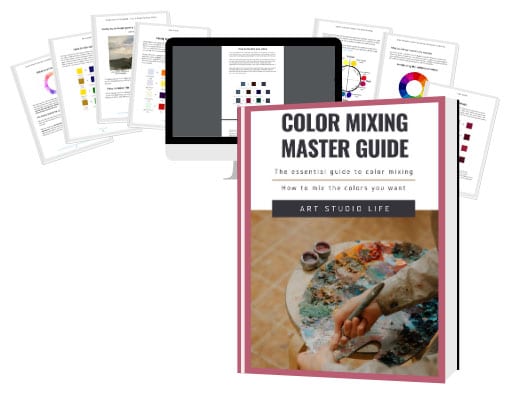
22 thoughts on “Leonardo da Vinci Painting Techniques Uncovered”
VERY thought inspiring!!… THANK YOU ELISABETH
You are so welcome!! Glad you also find Da Vinci’s advice inspiring as well!
Really quite marvellous to see the genius’s detailed advises… so refreshing; so old yet so up-to-date!
Wonderful!
I completely agree – the advise is so old but at the same time incredibly relevant and up to date!
Timely article as I am currently watching Ken Burns doc Leonardo Da Vinci on PBS. Thanks
What a fun coincidence! You are so welcome 🙂
interested in painting tips
You will find loads of painting tips on this website. Here is an article specifically on painting tips. You can also type what you are interested in learning in the search bar.
This was very helpful, especially the lighting since I’m a charcoal artist. Thank you! If you have some good inputs on drawing that would be great!! I have with clothing and folds. And getting my darks dark enough.
Hi Brenda, I am very glad to hear that this article was helpful for you! You are very welcome 🙂 I do have some other articles on drawing that would be helpful – HERE is a list of them.
You might want to try graduated softness of graphite pencils. 2B – 8B . 8B will give you darkest darks without denting the paper from bearing down. I think you’ll like the results. Good luck to you.
I love the Dutch painters, especially Vermeer. As for this lesson, I found the information about using blinds very helpful since I have struggled with figuring out how to best configure my tiny southern exposed working space.
Hi Diana, I am so glad that is helpful! Yes, southern facing windows can sometimes be a struggle – but blinds do help a lot. If you need to completely block some light I hear that putting aluminum foil over windows works well as blackout material.
Yes, these three and I would add Monet!
You are right! I should add Monet! 🙂
It was interesting
Glad to hear that Rina!
Interesting how natural light through location helps your shading and light on drawing & painting the way Leonardo explains.
Yes, it really is interesting how the specific direction of light is helpful for drawing/ painting. Glad this was helpful!
Thank you! That solves an issue I’ve had with the lighting while painting, and even with taking a photos of my paintings. The only other advice I remember is the light is best if it’s coming from above your left shoulder (?)
So glad to hear that!! And yes, the most ideal light is north facing that is above your easel… coming in from a 30 – 45 degree angle.
Pingback: Drawing lessons from Leonardo Da Vinci - Art Studio Life